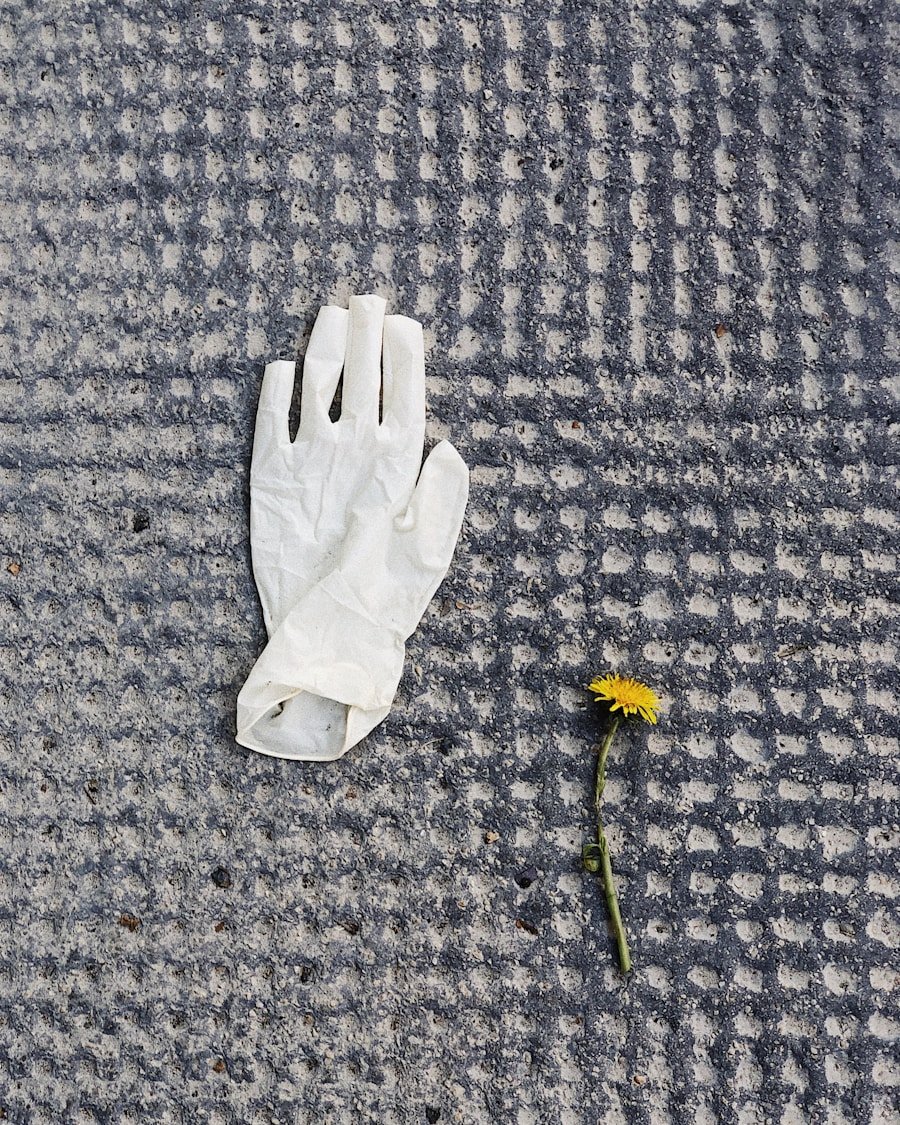Spring cleaning is more than just a seasonal ritual; it serves as a powerful catalyst for rejuvenation and renewal in our living spaces. One of the most significant benefits of spring cleaning is the opportunity to declutter. Over time, homes accumulate a plethora of items that may no longer serve a purpose or bring joy.
By systematically going through belongings, individuals can identify what to keep, donate, or discard. This process not only creates a more organized environment but also fosters a sense of accomplishment and clarity. A decluttered space can lead to improved focus and productivity, as it minimizes distractions and allows for a more streamlined living experience.
Moreover, spring cleaning provides an excellent opportunity to deep clean areas that are often overlooked during regular cleaning routines. Dust, allergens, and grime can build up in hidden corners, behind appliances, and within upholstery. Engaging in thorough cleaning can significantly improve indoor air quality, making the home a healthier place to live.
For instance, washing windows, cleaning carpets, and dusting ceiling fans can eliminate dust mites and other irritants that contribute to respiratory issues. The act of spring cleaning can also be a bonding experience for families, as they work together to refresh their home, instilling a sense of teamwork and shared responsibility.
Key Takeaways
- Spring cleaning can improve indoor air quality, reduce stress, and create a more organized and functional living space.
- The cost of spring cleaning can vary depending on factors such as the size of the home, the need for professional services, and the purchase of cleaning supplies.
- Spring cleaning can have a positive impact on mental health by reducing anxiety, increasing productivity, and providing a sense of accomplishment.
- Engaging in physical activity during spring cleaning can improve cardiovascular health, strength, and flexibility.
- The return on investment for spring cleaning includes a healthier and more enjoyable living environment, increased property value, and potential cost savings on future maintenance.
The Cost of Spring Cleaning
DIY Spring Cleaning: Keeping Costs Low
For those who choose to tackle spring cleaning independently, the primary expenses include cleaning supplies such as detergents, sponges, and trash bags. These costs can be relatively minimal, especially if one opts for eco-friendly or homemade cleaning solutions.
Investing in Specialized Equipment: A Costlier Approach
However, if individuals decide to invest in specialized equipment like steam cleaners or professional-grade products, the expenses can increase significantly. This approach may provide a more thorough cleaning experience, but it comes at a higher cost.
Hiring Professional Cleaning Services: Weighing the Costs and Benefits
On the other hand, hiring professional cleaning services can provide a thorough and efficient spring cleaning experience, but it comes with its own set of costs. Professional cleaners typically charge based on the size of the home and the extent of the cleaning required. Homeowners must weigh these costs against the time saved and the quality of cleaning achieved when considering whether to hire professionals or undertake the task themselves.
The Impact on Mental Health

The relationship between our living environment and mental health is profound. A cluttered and disorganized space can lead to feelings of anxiety and stress. Spring cleaning offers an opportunity to create a more serene environment that promotes mental well-being.
Engaging in the act of cleaning can be therapeutic; it allows individuals to focus on tangible tasks that yield immediate results. The satisfaction derived from seeing a clean and organized space can boost self-esteem and foster a sense of control over one’s surroundings. Furthermore, the process of decluttering can have emotional benefits as well.
Letting go of items that no longer serve a purpose can be liberating and cathartic. Many people hold onto possessions due to sentimental value or fear of waste, but spring cleaning encourages individuals to confront these attachments. By making conscious decisions about what to keep and what to release, individuals can experience emotional relief and clarity.
This emotional cleansing can lead to improved mood and overall mental health, creating a positive feedback loop that encourages further self-care practices.
The Impact on Physical Health
| Physical Health Impact | Data/Metrics |
|---|---|
| Obesity Rates | According to the World Health Organization, global obesity rates have nearly tripled since 1975. |
| Physical Activity Levels | Around 23% of adults and 81% of adolescents do not meet the recommended physical activity levels, according to the Centers for Disease Control and Prevention. |
| Chronic Disease Prevalence | The World Health Organization reports that chronic diseases such as heart disease, stroke, cancer, diabetes, and obesity account for 60% of all deaths worldwide. |
| Life Expectancy | Life expectancy varies by country, but the global average is around 72 years, according to the World Bank. |
The physical health benefits of spring cleaning are often overlooked but are equally important as its mental health advantages. A clean home is essential for maintaining good health, as it reduces exposure to allergens, bacteria, and other harmful substances. Dust accumulation can trigger allergies and asthma symptoms; therefore, thorough cleaning during spring can significantly improve indoor air quality.
Regularly washing bedding, vacuuming carpets, and dusting surfaces can help mitigate these health risks. Additionally, engaging in physical activity during spring cleaning can contribute positively to one’s physical health. The act of moving furniture, scrubbing floors, and organizing items requires physical exertion that can serve as a form of exercise.
This activity not only burns calories but also promotes cardiovascular health and muscle strength. For individuals who may not have regular exercise routines, spring cleaning can provide an excellent opportunity to incorporate movement into their day while accomplishing necessary household tasks.
The Return on Investment
When considering spring cleaning from a financial perspective, it is essential to evaluate the return on investment (ROI) associated with this practice. While there are upfront costs involved—whether through purchasing supplies or hiring professionals—the long-term benefits often outweigh these initial expenditures. A clean and organized home can enhance property value; potential buyers are more likely to be attracted to a well-maintained space.
This is particularly relevant for those considering selling their homes in the near future; investing time and resources into spring cleaning can yield significant returns when it comes time to list the property. Moreover, maintaining a clean home can lead to cost savings in other areas. For instance, regular deep cleaning can prolong the lifespan of appliances and furniture by preventing wear and tear caused by dirt and grime buildup.
Additionally, a well-organized home reduces the likelihood of purchasing duplicate items because they cannot be found when needed. This not only saves money but also contributes to a more sustainable lifestyle by minimizing waste.
Ways to Save Money on Spring Cleaning

Utilize Household Items as Cleaning Supplies
Common ingredients like vinegar, baking soda, and lemon juice can serve as powerful cleaners for various surfaces around the home. For example, vinegar mixed with water can effectively clean windows and mirrors without leaving streaks.
Create a Cleaning Schedule
Another cost-saving approach is to create a cleaning schedule that spreads tasks over several days or weeks rather than attempting to complete everything in one day. This not only makes the process less overwhelming but also allows individuals to use their existing supplies more efficiently without needing to purchase additional products.
Organize Group Cleaning Sessions
Organizing group cleaning sessions with friends or family members can be both fun and economical; sharing supplies and labor can reduce individual costs while fostering camaraderie.
Tips for Efficient Spring Cleaning
Efficiency is key when it comes to spring cleaning; having a plan in place can make the process smoother and more manageable. One effective strategy is to create a checklist that outlines specific tasks for each room in the house. This not only helps ensure that no area is overlooked but also provides a sense of accomplishment as tasks are checked off upon completion.
Prioritizing high-traffic areas such as kitchens and bathrooms first can also maximize immediate impact. Another tip for efficient spring cleaning is to adopt the “one in, one out” rule when decluttering. For every new item brought into the home, an old item should be removed.
This practice helps maintain organization over time and prevents clutter from accumulating again after the initial spring clean. Additionally, using storage solutions such as bins or baskets can streamline organization efforts by providing designated spaces for items, making it easier to find what is needed without creating chaos.
Alternatives to Traditional Spring Cleaning
While traditional spring cleaning methods are effective for many households, there are alternative approaches that may better suit certain lifestyles or preferences. One such alternative is adopting a minimalist lifestyle that emphasizes simplicity and intentionality in possessions. By reducing the number of items owned from the outset, individuals may find that they require less frequent deep cleaning sessions since there is less clutter to manage.
Another alternative is implementing regular maintenance cleaning throughout the year rather than reserving all deep cleaning tasks for springtime. By establishing daily or weekly routines that include tidying up and light cleaning tasks, individuals can prevent dirt buildup and maintain an organized space year-round. This approach not only reduces the burden of extensive spring cleaning but also promotes ongoing mindfulness about one’s living environment.
In conclusion, spring cleaning offers numerous benefits that extend beyond mere aesthetics; it impacts mental and physical health while providing potential financial returns on investment. By understanding the costs involved and exploring ways to save money while maximizing efficiency, individuals can create a cleaner, healthier living space that enhances their overall quality of life.
Spring cleaning can be a daunting task, but is it worth the investment of time and money? According to a recent article on 5 Best Portable Carpet Cleaners for Spot Cleaning, maintaining a clean home can have a significant impact on your overall well-being. Investing in the right tools, such as a portable carpet cleaner, can make the process easier and more effective. So, while spring cleaning may require some upfront costs, the long-term benefits of a clean and organized home are certainly worth it.
FAQs
What is spring cleaning?
Spring cleaning is the practice of thoroughly cleaning a home or space in the springtime. It often involves deep cleaning tasks that may not be done on a regular basis, such as cleaning windows, organizing closets, and decluttering.
Is spring cleaning worth the investment?
The worth of spring cleaning depends on individual preferences and circumstances. Some people find value in the sense of renewal and freshness that comes with a thorough cleaning, while others may not see it as a worthwhile investment of time and money.
What are the potential benefits of spring cleaning?
Spring cleaning can have several benefits, including improved indoor air quality, reduced allergens, a more organized and functional living space, and a sense of accomplishment and well-being.
What are some common tasks involved in spring cleaning?
Common tasks involved in spring cleaning may include dusting and vacuuming all surfaces, cleaning windows and window treatments, deep cleaning carpets and upholstery, organizing and decluttering, and cleaning and organizing outdoor spaces.
How often should spring cleaning be done?
Spring cleaning is typically done once a year, in the springtime. However, the frequency may vary depending on individual preferences and the specific needs of the living space.


2 thoughts on “Is Spring Cleaning Worth the Investment?”